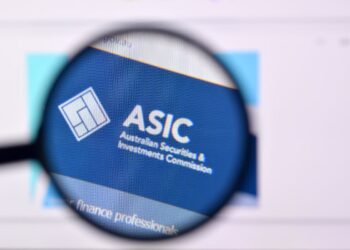Superannuation funds must change their asset allocation to accommodate the evolving income and liquidity requirements of members, Mark Thomas writes.
The performance of self-managed superannuation funds (SMSF) is often quite different to large retail and industry super funds, especially on a risk-adjusted basis.
However, this is set to change.
Retail and industry super funds are being forced to rethink portfolio construction, as a growing number of their members retire and withdraw lump sum entitlements and/or a pension from their savings and investments.
Over time, the performance of industry and retail funds will increasingly mirror the returns generated by SMSFs because they won’t be able to invest as heavily in less liquid assets.
While SMSFs and large industry and retail funds have comparable exposure to Australian shares and direct property, industry and retail funds have a significantly higher allocation to international equities and alternative assets including private equity, infrastructure and hedge funds.
Large funds currently extract illiquidity premiums for members through alternative investments but implementing such strategies will become harder with falling funds under management.
Despite the mandated growth of Australia’s $1.8 trillion super industry, overall super contributions have been declining relative to rising retirement payouts.
According to a recent report by the Australian Prudential Regulation Authority, the broader accumulation industry is in a structural sell down.
“For some time now, the percentage of members transitioning from the accumulation to the pension phase has increased faster than the annual growth in the accumulation membership, indeed, the growth in the accumulation members has been declining since 2009”, APRA’s report stated.
Statistics show that the industry is on track to experience negative outflows within the next 30 years. SMSFs are expected to encounter the largest outflows over the next 15 years.
Already some public sector funds are in net outflows. For example, State Super NSW has been in outflow for a decade with around half of its membership in retirement and the rest inching ever closer.
As these demographic changes gather pace, larger funds will need to change their asset allocation to accommodate the income and liquidity requirements of members.
One way to slow the trend and manage the impact of net outflows is to place limitations on lump sum payments and introduce incentives to encourage retirees to create an income stream.
Data from the Australian Bureau of Statistics show over 50 per cent of retirees withdraw their superannuation as a lump sum to pay off their mortgage, buy a new home or make renovations.
Professional associations and lobby groups including accounting body, CPA Australia, have been calling on the Government to limit access to lump sum entitlements upon retirement in order to avoid a retirement savings disaster.
A 2012 report by CPA Australia found superannuation was being used by retirees to pay off debt they had accumulated throughout their working lives. Rather than building up their retirement nest egg to insure against longevity risk, retirees were using their funds to go on overseas holidays, help children buy property and generally pay for a lifestyle they could not afford.
According to Deloitte, around 80 per cent of retirees are still dependent on a full or partial government pension, 22 years after the introduction of compulsory super.
Deloitte believes this will only decrease to 75 per cent over the next 20 years.
Based on these confronting statistics, it’s likely the government will continue to shift the goal posts around superannuation. Under the Abbott Government’s first Budget, the pension age will rise to age 70 by 2035.
Mark Thomas is chief executive and chief investment officer at van Eyk Research.





